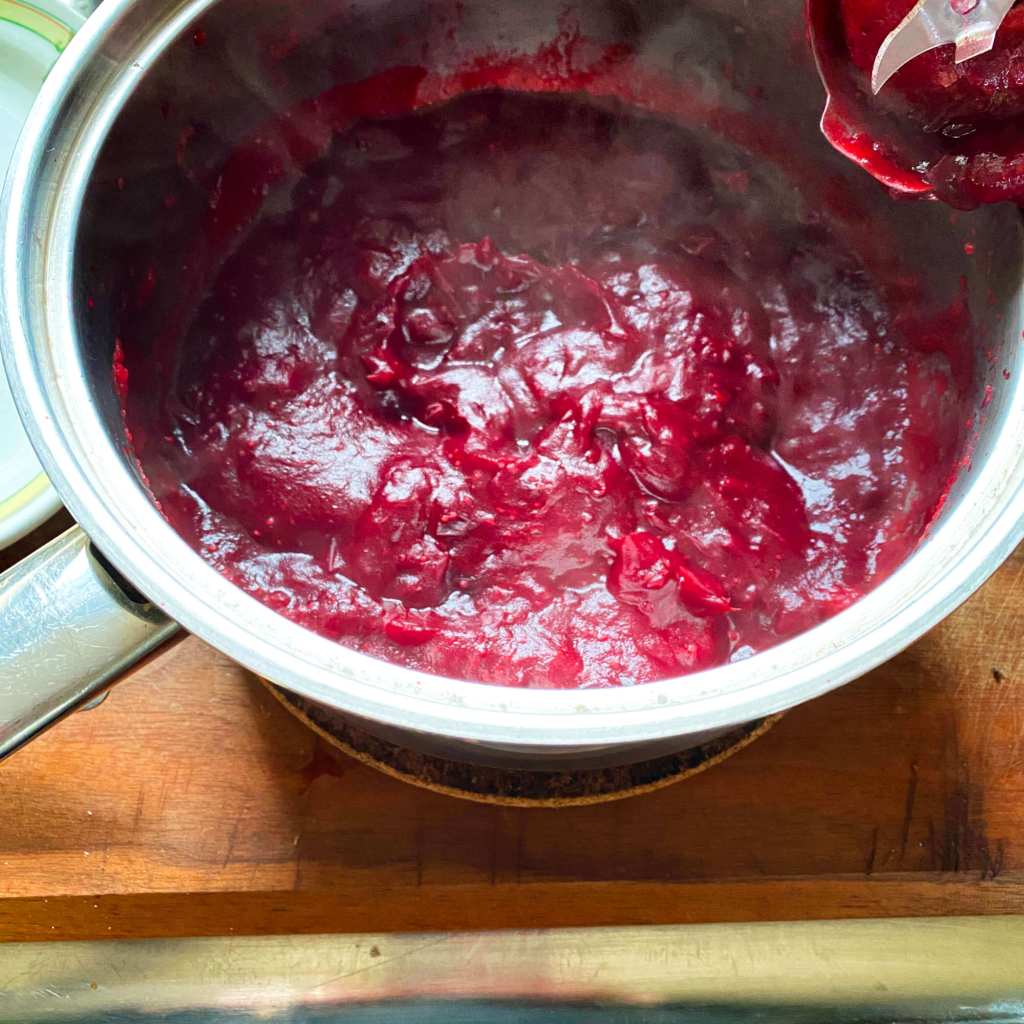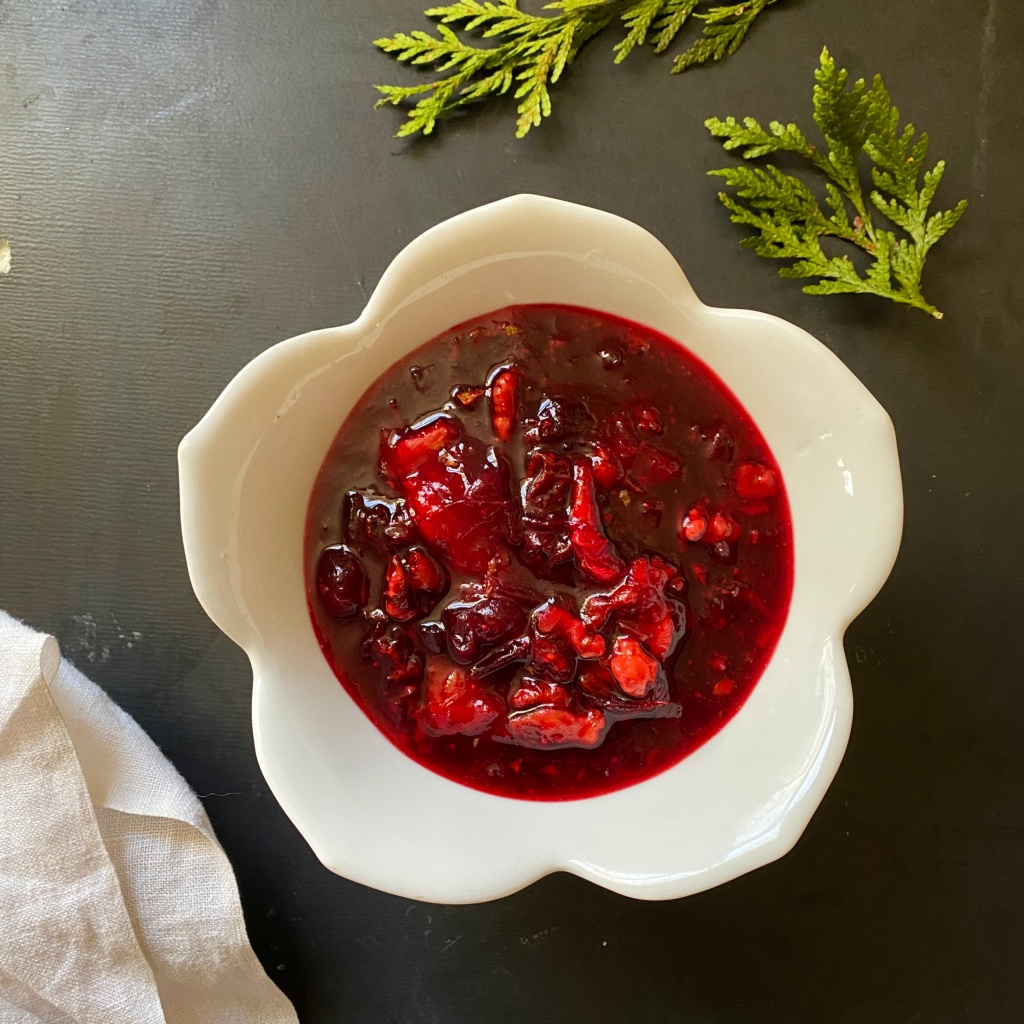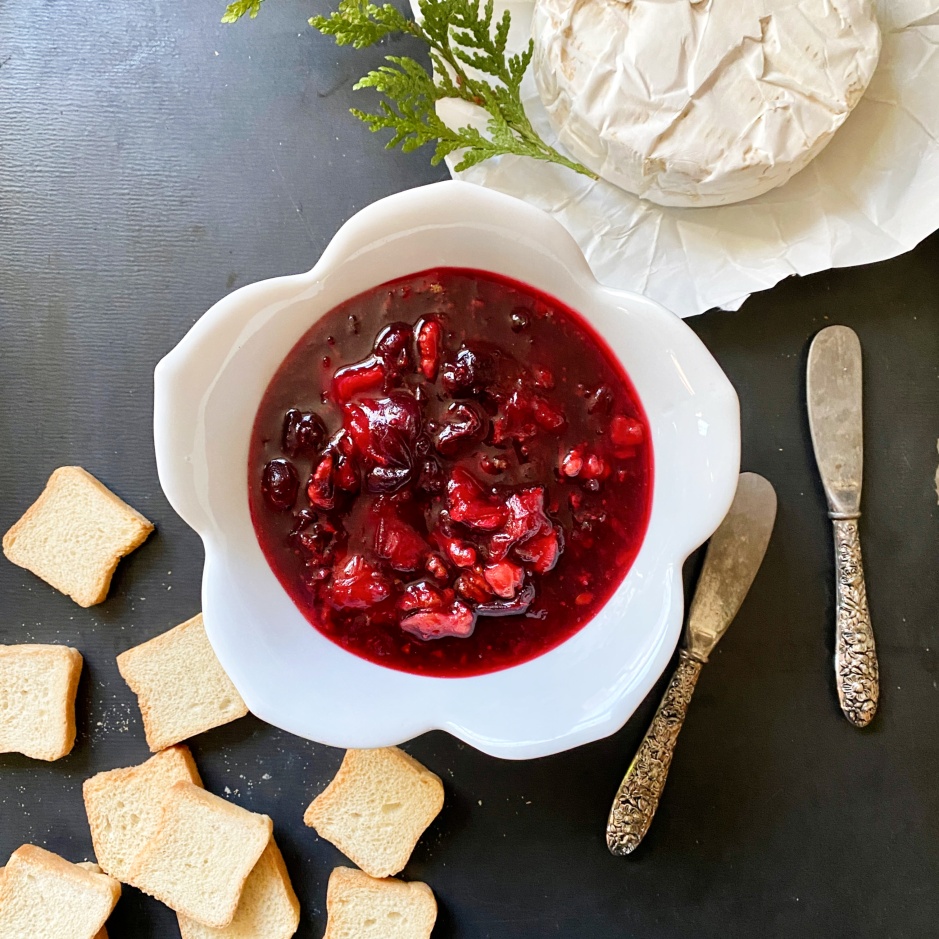
Undoubtedly the most well-known food to come out of Mystic, Connecticut is pizza, thanks to the 1988 movie Mystic Pizza starring Julia Roberts…
The real-life pizza shop that inspired the film is still serving up hot pies every day in this beautiful, bustling, historic port city, but there’s a long-standing tradition of other delicious New England fare that has made Mystic, CT a go-to source for memorable cuisine too. The recipe featured here today might not be the star of a feature film but it definitely will be a star on your holiday table. Today’s post comes from The Mystic Seaport Cookbook, a collection of historic New England recipes first published in 1970 by Lilian Langseth-Christensen…

You might remember this cookbook from last Spring when we featured a hot rum toddy and a story about sailors and life on the high seas.


The recipe we are featuring here today isn’t quite as dramatic as that one, but it is equally delicious. Simply called Cranberry Relish, it’s an ideal alternative to canned cranberry sauce at Thanksgiving and travels the rest of the holiday season with tantalizing appeal. Post-Turkey Day, this simple New England cranberry relish becomes a crimson-colored companion to all sorts of festive Christmas party hors d’oeuvres, holiday-themed sandwiches, and cozy winter snacks.

Back in the 19th century, Connecticut was home to a number of cranberry farms, but it isn’t known for its commercial cranberry bogs anymore. In New England, that’s left up to the neighboring state of Massachusetts now, where they harvest over two million pounds of cranberries per year. Some farms in the Bay State have been run by generations of families that stretch back over 150 years. Thanks to modern machinery, cranberry farming is an easier endeavor but back then it was considered one of the hardest crops to farm and was done entirely by hand with wooden scoops combed through the cranberry bushes. No one was spared the arduous task of collecting cranberries, not even kids.



In Connecticut, there is just one remaining cranberry farm in the state left, but cranberry relish has been a part of the New England diet and therefore, the Connecticut diet, since colonial days when indigenous tribes taught early settlers how to pound them into pastes and sauces.
Harvested during the autumn months of September and October, by the time they make an appearance on the Thanksgiving table in the form of relishes, jellies, jams, compotes, sauces, and innumerable baked goods, cranberries add bright color, dimension, and acidic flavor to a holiday meal mostly recognized by its earthy brown and beige shades.

Pick up any New England cookbook, and the author will have their own preferred method of making this holiday side dish, but there will always be some ingredients that everyone agrees on. Technically, what differentiates cranberry sauce from cranberry relish is the cooking process. Cranberry sauce generally tends to be cooked on the stovetop – boiled down with sugar to a sweetened consistency that is thin and syrupy or thick and gelatinous depending on the amount of cooking time. Relish, on the other hand, more often than not, is mixed together in a blender and served chunky and raw with the addition of just a bit of sugar and some other aromatics including spices and citrus. The recipe featured here today is a cross between both. It’s cooked on the stove and includes citrus, raisins, and nuts for a more chutney-like consistency. The chunky texture and quick cooking method, make this Mystic recipe easy and versatile – ideal for all sorts of applications long after the Thanksgiving meal has been enjoyed.
First, we will look at the cooking method and then we’ll dive into the number of different ways to serve this version of cranberry relish. You’ll notice at the end, that this recipe offers a canning suggestion for storage but we just made one big batch and stored it in the fridge where it lasted for over a week and a half.

Cranberry Relish
From the Mystic Seaport Cookbook circa 1970
Makes 6 pints
6 cups fresh cranberries
1 cup cold water
1 cup boiling water
1 1/2 cup raisins
1 1/2 cups chopped walnuts
2 large oranges
4 cups sugar
Grated rind of 1 lemon
Wash the cranberries and pick out any remaining debris (stems, leaves, etc). Boil them in a cup of cold water until the skins pop and the berries become soft.

Blend them into a puree using a hand-held immersion blender…

and then add the boiling water, raisins, walnuts, and sugar. Peel the oranges and dice the pulp. Scrap any white pith off the orange rinds, discard the pith, and dice the orange rinds. Add the rind to the mixture.


Next, stir in the grated lemon rind, and cool the relish.

Transfer relish to a bowl and serve or store in an airtight container in the fridge or pour into jars. If storing in jars, seal the jars with melted paraffin wax and shelve for a later date.

A lovely addition to the holiday table, this cranberry recipe contains the best of both worlds when it comes to sauce and relish. It’s syrupy but also chunky. It’s sweet but also tangy. The walnuts give it a satisfying dose of substance and protein. The citrus adds a burst of flavor that keeps the palate notes fresh and bright.


Naturally, it pairs well with turkey, mashed potatoes and gravy but we also love it when it is heated up and spread piping hot over Brie cheese and served alongside an assortment of crackers. Post-Thanksgiving, we like to spread this relish on bread just like mayonnaise for turkey sandwiches. Add it to the filling of turkey pot pie and the dish becomes more savory in an instant. Spread it on leftover Thanksgiving dinner rolls and serve it alongside eggs for breakfast or add it as a topper to oatmeal or yogurt. It’s also great on grilled burgers – beef, chicken, turkey or vegetarian. Basically, any place where you might like a little dollop of a sweet condiment, this one works wonders.

There’s no end to the zillion ways you can incorporate Thanksgiving leftovers into new and creative foods. That’s really the beauty of the holiday after all, isn’t it? All that cooking done days ahead of time allows a rest post-holiday with minimal meal-making effort required, except for quick reheats of the feast that keeps on giving. That leaves plenty of time to relax, read a book, enjoy your friends and family, play games, go for a walk, watch a movie. Perhaps after reading this post, Mystic Pizza will be on the viewing schedule. And maybe, depending on how adventurous you are in the kitchen, this cranberry relish might just inspire a new type of pizza topping too – Mystic style.
If you are looking for more vintage recipes to augment your Thanksgiving menu, we also recommend colonial-style Corn Pudding from the Williamsburg Cookbook and Homemade Citrus Cider from the 1989 Southern cookbook, Wild About Texas.
Hope you find this recipe just as delicious as we did. If you have any favorite cranberry sauce recipes, please feel free to include yours in the comments section. Cheers to the cranberries and all the cooking creativity they inspire.



